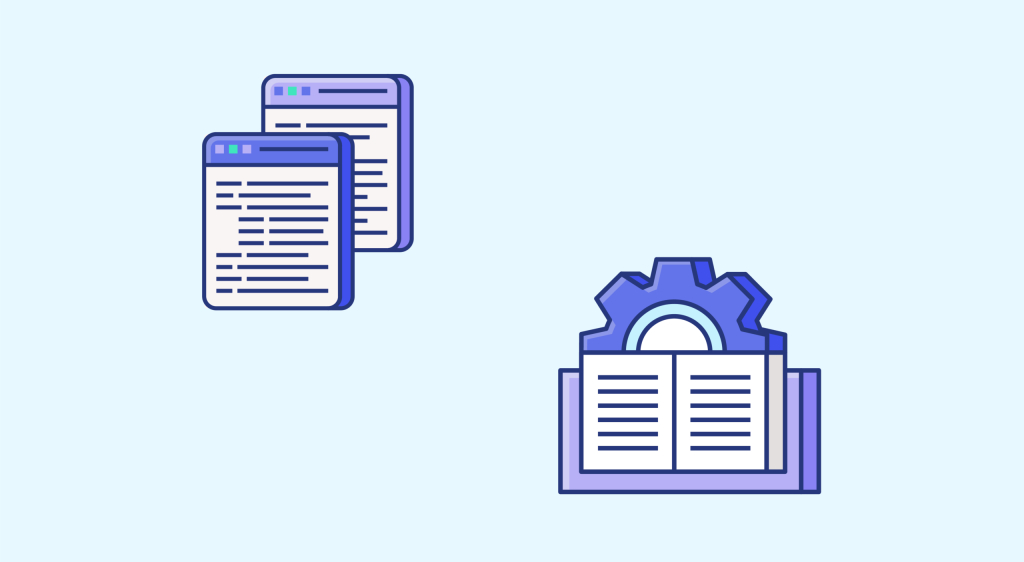The back end is essential for web development, but also for Data Science and Machine Learning. Find out all you need to know about it, and how to follow a dedicated training course.
Today, we use a wide range of software applications, on PCs and mobiles, for both entertainment and business. If an application delivers a smooth, intuitive experience, it’s largely thanks to its “backend” performing all the essential tasks in the background.
What is backend development?
In web development, activities carried out in the background of programs are referred to as back-end development.
This concept covers the logic, integration, and server-side activities of a web application. Examples include writing APIs, creating libraries, and working on system components. Conversely, front-end development focuses on the services and programs that users will encounter.
Back-end developers build the computer code that enables a database to communicate with an application. They maintain the back end of a website, including its databases and servers.
What is a back-end developer?
The back-end developer’s job focuses on writing code, scripting, and architecting a website that communicates with the site’s database and the user’s web browser. They must ensure data consistency and integrity.
This role requires a wide range of technical skills. The backend developer must be able to create code that performs relational mapping to retrieve data from a database. They understand how DBMS such as MySQL, PostgreSQL, SQL Server, MongoDB, and Oracle Database work.
Back-end developers also master back-end programming languages such as Python. This simple, versatile language is the most widely used and enables backend development via frameworks such as Django and Flask.
JavaScript environments such as NodeJS and ExpressJS are also used. In particular, Java was designed from the outset for use on the server. Popular Java frameworks include Spring and Java Server Faces.
On Windows systems, the C# language is the recommended architecture for backend programming. Other commonly used languages include PHP, Perl, and Ruby.
Backend and frontend developers are constantly working together, so it’s useful to know the basics of frontend technologies like HTML and CSS.
In addition, version control systems enable project-related files to be managed and progress tracked. These include Git and GitHub. These tools are widely used for collaboration on Data Science projects.
A back-end developer also handles Cloud solutions such as Amazon Web Services (AWS), Google Cloud Platform (GCP), or Microsoft Azure.
Of course, this professional also needs non-technical skills such as problem-solving, critical thinking, communication, and a flair for analysis. They must be able to work both independently and as part of a team.
What is the role of the back-end developer?
Back-end developers have many responsibilities. To design effective solutions, they must first identify the needs and performance objectives of a website.
They are also responsible for developing and administering APIs (Application Programming Interfaces), developing data storage solutions for websites, and writing, testing, and maintaining development solutions for code-related problems.
He communicates with developers, designers, and system administrators to identify new functionalities for development. His role is also to create a website architecture using the right product lifecycle approach.
The expert organizes the system’s logic, and remedies any difficulties that may arise. They are also responsible for debugging applications.
What are the back-end development professions?
Back-end development skills are highly sought-after in companies. They give access to a wide range of positions.
In addition to the role of back-end developer, these include Java developer, full-stack developer, DevOps engineer, software engineer, and iOS developer. In addition, the back end is widely used for Data Science and Data Engineering.
How much does a back-end developer earn?
Back-end developers can enjoy a high salary. On average, a back-end developer in the USA earns $102,000 a year.
In Canada, according to Talent.com, the average salary for a back-end developer is $77.70 per hour. Entry level positions start around $102.000 and the most experienced go up to $155.000 per year.
How do I take a back-end training course?
As you can see, mastering back-end development can open up a wide range of career opportunities. To acquire this expertise, you can turn to DataScientest.
All our training courses start with a module dedicated to the Python programming language and a module dedicated to databases, starting with SQL and MongoDB.
With the Data Engineer course, a CI/CD module also covers Git and GitHub. Other modules cover DataViz, Machine Learning, and Business Intelligence. At the end of the course, you’ll have all the skills you need to work in Data Science or back-end development.
Our innovative Blended Learning approach combines online learning on a coached platform and Masterclasses. You can choose between Continuing Education and an intensive BootCamp mode.
Through our prestigious partnerships with Sorbonne University, learners receive an industry-recognized certificate. Of our alumni, 80% find immediate employment.
You know all about the back end. For more information, see our complete file on Python and our dossier on the front end.










